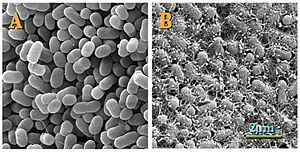Escherichia coli are gram negative, rod shaped bacteria that are often used in laboratory studies and are usually harmless, residing in the human digestive tract as part of the normal flora. E. coli 0157:H7 is a pathogenic strain of E. coli that was first identified as a cause of disease in the United States in 1982, during an investigation into an outbreak of gastrointestinal illness.
The organism is also called enterohemorrhagic E. coli (EHEC) because it causes abdominal pain with diarrhea that may contain blood. It lives in the intestines of healthy cattle and can contaminate meat during slaughter. It is believed that the widespread use of antibiotics by American farmers has promoted the horizontal gene transfer of antibiotic resistance genes and pathogenicity islands that has led to the creation of new pathogenic strains such as E. coli 0157:H7. The verotoxins that cause the disease are also called shiga toxins because they were acquired from Shigella strains. The illness predominantly occurs in the U.S., Canada, Japan and other industrialized nations of Europe.
The average incidence in most countries ranges from 1-30 per 100,000 and the number of confirmed cases is increasing. In the U.S, about 73,000 people are infected anually, with an average of 61 deaths per year.
 Ecoli
Ecoli
No comments:
Post a Comment